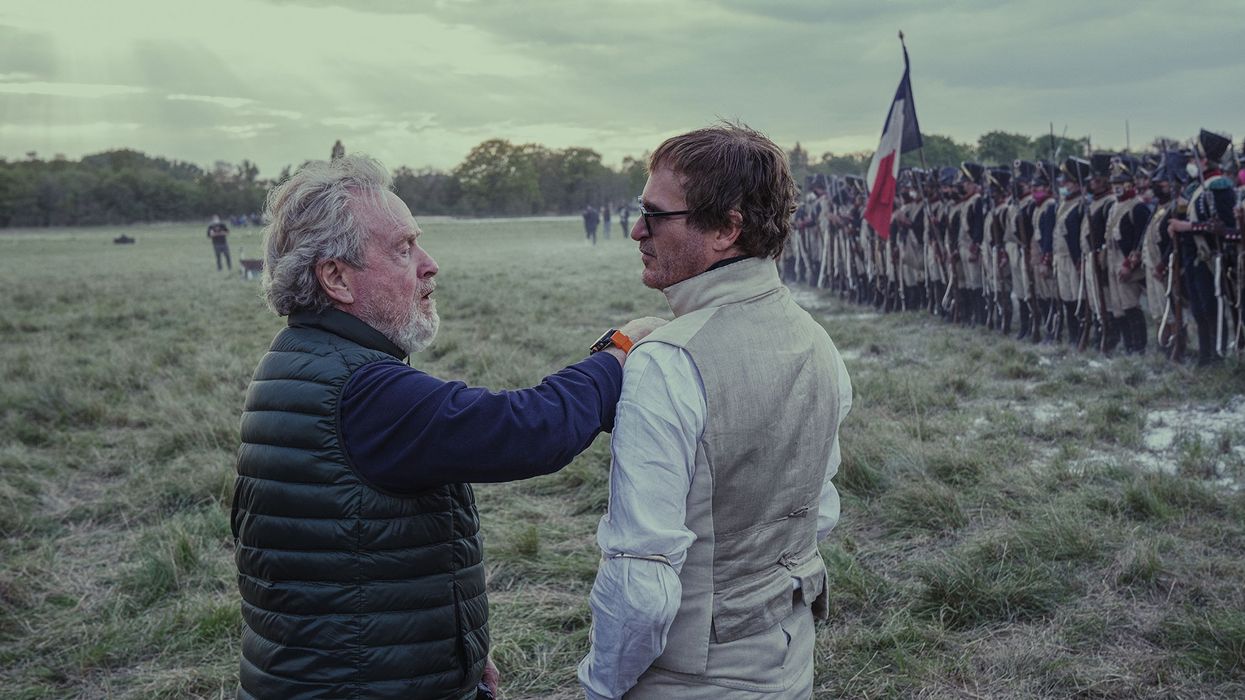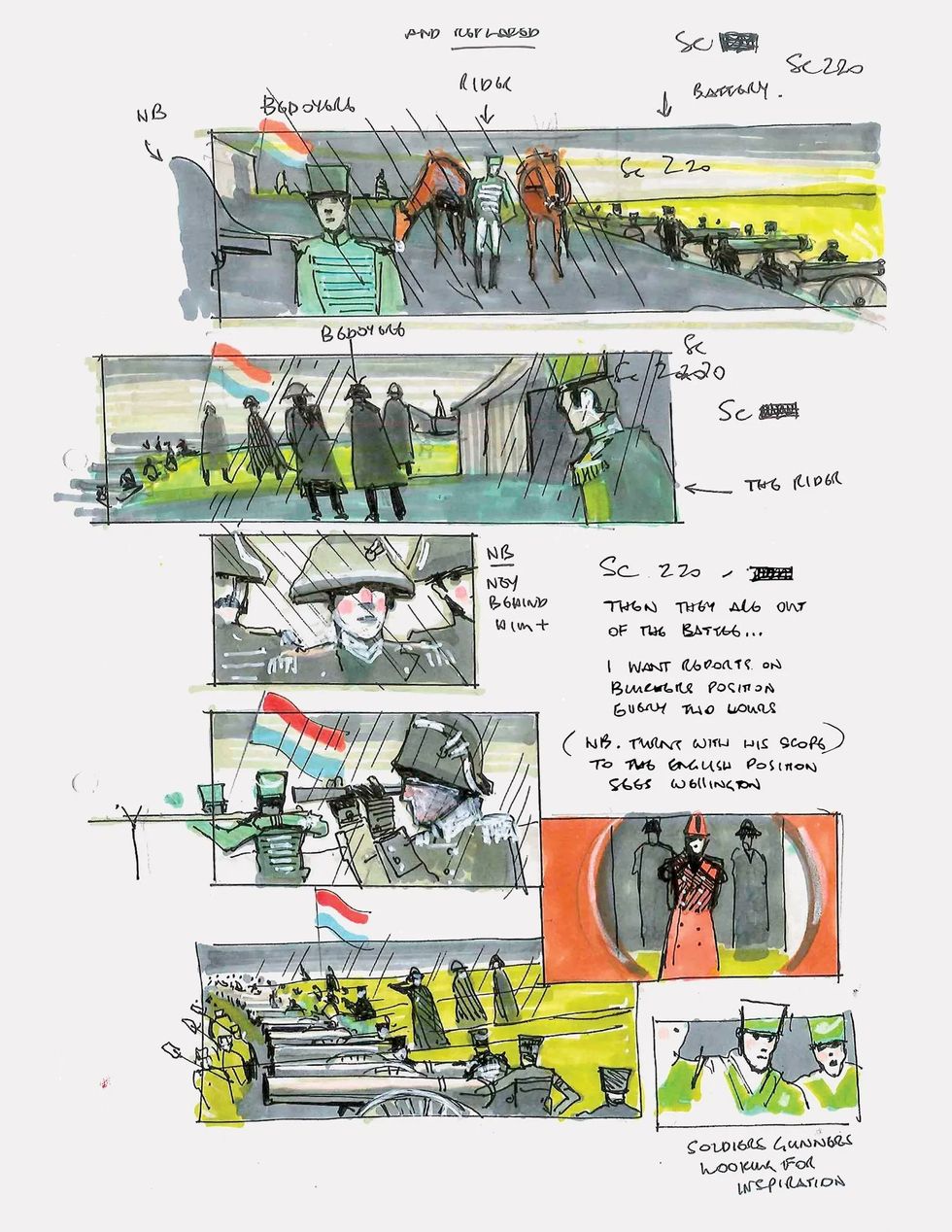Discover Why Ridley Scott's Hand-Drawn 'Napoleon' Storyboards Are a Masterclass
Check out the hand-drawn storyboards by Ridley Scott for his upcoming film, Napoleon.

Ridley Scott on set of 'Napoleon'
Ridley Scott has been a filmmaking maestro that has changed the trajectory of cinema since his directorial debut, The Duellists, in 1977. Scott is known for his masterful use of visuals, his ability to create suspense and atmosphere, and his exploration of complex themes. His films are often visually stunning, with innovative special effects and cinematography. He is also a skilled storyteller, able to create films that are both entertaining and thought-provoking.
Like most great directors, Scott's production process starts with storyboards. However, Scott's storyboards are different. The filmmaker meticulous hand-draws his storyboards, which are called Ridleygrams, for each of this films.
In a recent interview with The New Yorker, Scott shows off his latest Ridleygrams for his upcoming war epic, Napoleon. The film takes a look at the military commander's origins and his swift, ruthless climb to emperor, viewed through the prism of his addictive and often volatile relationship with his wife and one true love, Josephine.
Check out the Ridleygrams below, and what we can learn from Scott's storyboard process.


What We Can Learn from 'Napoleon' Ridleygrams
Ridley Scott's storyboards, often referred to as Ridleygrams, are highly regarded for their detailed and expressive nature. They play a crucial role in his filmmaking process, serving as blueprints for his cinematic visions.
- Technical Expertise: Scott possesses exceptional artistic skills, evident in his detailed and expressive drawings. His storyboards are not mere sketches but rather intricate works of art that capture the essence of each scene.
- Visual Storytelling: Scott's storyboards are not just about depicting scenes; they are about telling a story. He carefully composes each panel to convey the desired emotions, atmosphere, and narrative progression.
- Clarity and Communication: Scott's storyboards are remarkably clear and easy to understand. They provide a comprehensive visual representation of his intentions, enabling collaborators to grasp his vision accurately.
- Precision and Control: Scott's meticulous attention to detail ensures that his storyboards are not just suggestive but precise blueprints for the final film. This precision allows him to maintain control over the visual language of his films.
- Expressive and Dynamic Shots: Scott's storyboards often feature dynamic camera angles, inventive compositions, and expressive lighting, demonstrating his understanding of cinematography and visual storytelling.
- Character Expression and Emotion: Scott's storyboards effectively convey the emotions and intentions of his characters through facial expressions, body language, and interactions within the frame.
- Worldbuilding and Atmosphere: Scott's storyboards establish the tone, ambiance, and overall aesthetic of the film, providing a visual representation of the world he intends to create.
- Collaborative Tool: Scott's storyboards serve as a valuable communication tool, allowing him to collaborate effectively with his crew, ensuring everyone is on the same page regarding the visual aspects of the film.
- Creative Exploration: Storyboards provide a platform for Scott to experiment with different visual ideas and compositions before committing to the final shots.
- Reference and Guide: Scott's storyboards become invaluable references during the filmmaking process, ensuring consistency between the planned shots and the final footage.
Ridley Scott's storyboards are not just planning tools, they are works of art in themselves, reflecting his creative vision and artistic sensibilities. They serve as a testament to his dedication to visual storytelling and his meticulous approach to filmmaking.
Source: The New Yorker

 'Anora'Neon
'Anora'Neon Annie Johnson Kevin Scanlon
Annie Johnson Kevin Scanlon









